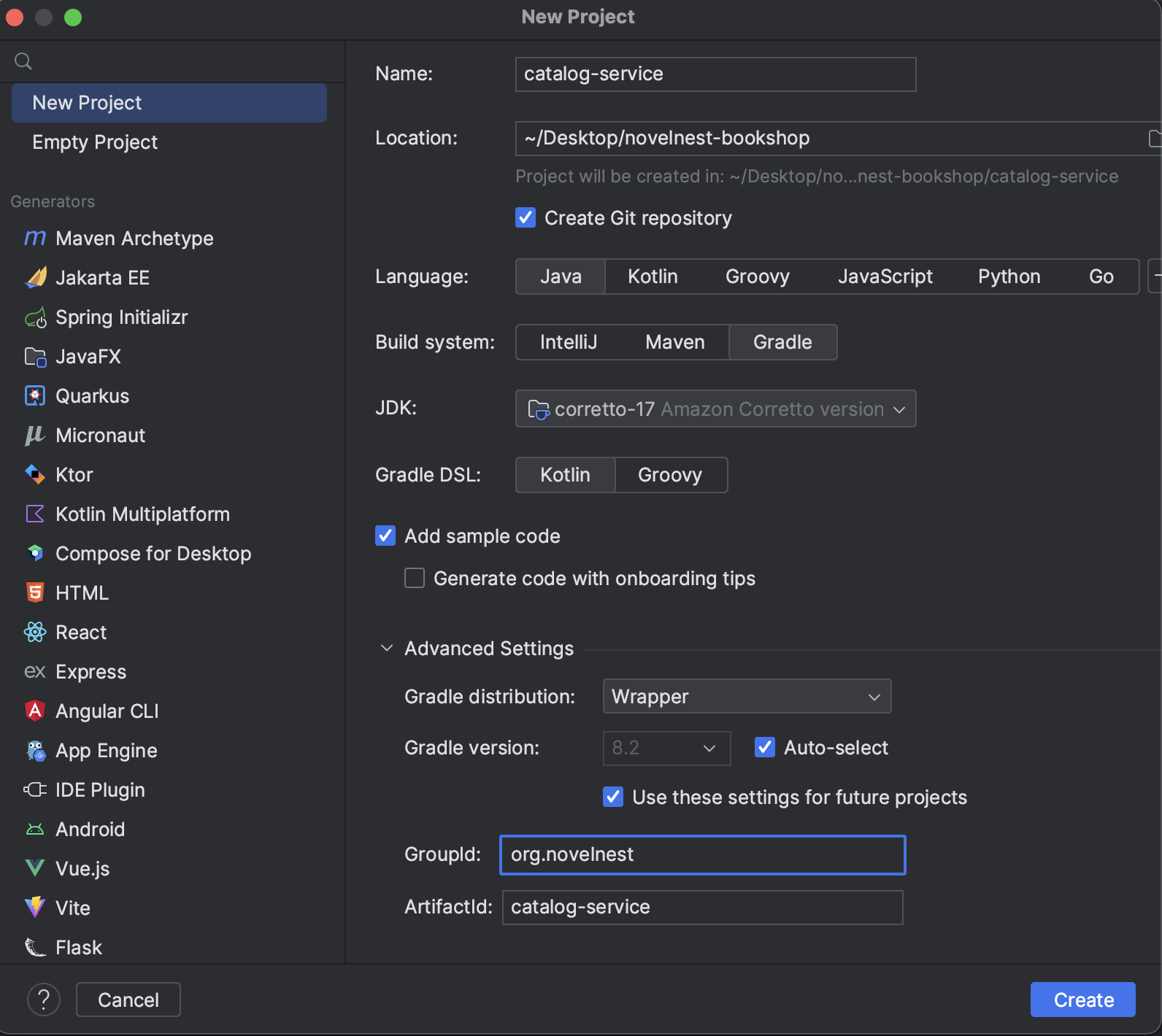My first blog post
Hello
Hello world!
Hello world!
Hello world!
sudo apt-get install -y ripgrepmkdir -p ~/.config/nvimcd ~/.config/nvimtouch init.luamkdir -p lua/mc/coremkdir -p lua/mc/pluginsmkdir -p lua/mc/pluginsrequire(“mc.core.options”)
catalog-service repository on Github (which belongs to NovelNest organization)
In other words, we can say the application should provide an API to perform CRUD operations on books.
| Endpoint | HTTP Method | Request body | Status | Response body | Description |
|---|---|---|---|---|---|
| /v1/books | GET | 200 | Book[] | Get all the books in the catalog | |
| /v1/books | POST | Book | 201 | Book | Add a new book to the catalog |
| 402 | A book with the same ISBN already exists | ||||
| /v1/books/{isbn} | GET | 200 | Book | Get the book with the given ISBN | |
| 404 | No book with the given ISBN exists | ||||
| /v1/books/{isbn} | PUT | Book | 200 | Book | Update the book with the given ISBN |
| 201 | Book | Create a book with the given ISBN | |||
| /v1/books/{isbn} | DELETE | 204 | Delete the book with the given ISBN |
The contract is established through the REST API, so let’s move on and look at the business logic. The solution is centered around three concepts:
Entity: an entity represents the noun in a domain. In this case: “Book”.Service: a service defines the use cases for the domain. For example: “adding a book to the catalog”.Repository: a repository is an abstraction to let the domain layer access data independently from its source.com.novelnest.catalogservice.domain package for the business logic, create a Book java record to
represent the domain entity.package com.novelnest.catalogservice.domain;
public record Book (
String isbn, String title, String author, Double price
){}In this series, I aim to build an example web app as close as real-world scenario as possible and then set up the necessary infrastructure for it from scratch.
NovelNest is a specialized bookshop whose mission is to spread knowledge and information. The organization behind NovelNest - has decided to start selling
its book online.

PostgreSQL database to permanently store the data processed by the application.FlywaySpring AMQP and RabbitMQRedisPrometheus, GrafanaOpenTelemetryFluentbit, Loki